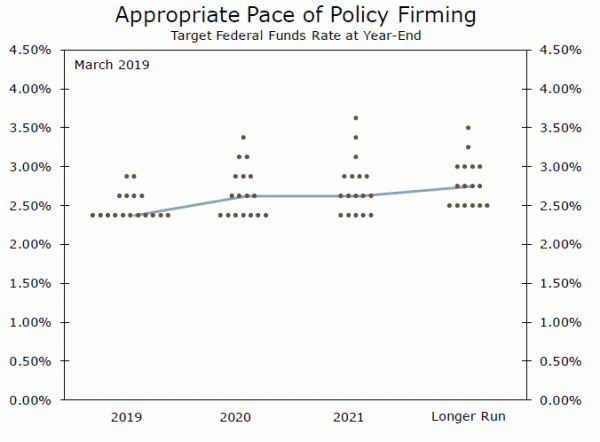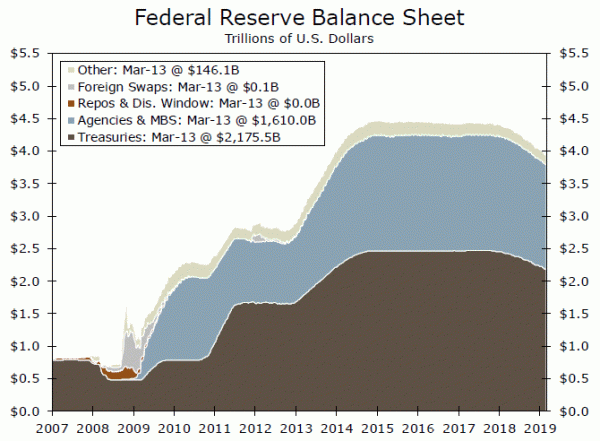As widely expected, the FOMC kept rates on hold today, but it now thinks that it will not need to tighten any further this year
Rates Remain Unchanged But…
As universally expected, the Federal Open Market Committee (FOMC) voted unanimously today to keep the range for the fed funds rate between 2.25% and 2.50%. That said, today’s announcement was not without consequence. For starters, the committee downgraded its assessment of the economy, saying that “growth of economic activity has slowed from its solid rate in the fourth quarter.” More formally, the median FOMC member now forecasts that real GDP will grow 2.1% in 2019 (top chart), which is down from the 2.3% rate that the median projected in December (the last time the forecast was made public). The median GDP forecast for 2020 has edged down to 1.9% from 2.0% previously. The FOMC also trimmed its PCE inflation forecast for 2019 and 2020, and it now does not see unemployment receding much further from its current rate of 3.8%. (In December, the median forecaster looked for the unemployment rate to decline to 3.5% in 2019.)
Given this more sober forecast, the FOMC scaled back the amount of tightening that it believes will be necessary. In December, the median FOMC forecaster projected 50 bps of tightening in 2019 and another 25 bps rate hike in 2020. The median forecaster now believes that the FOMC will be on hold for the rest of 2019 (middle chart). The median forecast of one 25 bps rate hike next year remains in the forecast, but 7 of the 17 FOMC members think that rates will be on hold next year as well. In other words, the forecast of a rate hike next year is a close call.
Furthermore, the committee made some decisions regarding its balance sheet (bottom chart). At present, the Fed is allowing a maximum of $30 billion of Treasury securities to roll off its balance sheet every month. Starting in May, the maximum amount of Treasury securities that will be allowed to roll off will be reduced to $15 billion per month. Starting in October the overall size of the balance sheet will remain unchanged, for an unspecified period of time. The Fed, however, will continue to allow a maximum amount of $20 billion of mortgage-backed securities (MBS) to roll off the balance sheet every month, to be replaced by Treasury securities. As we have been writing for some time, the Fed’s balance sheet will be elevated for the foreseeable future, and it will continue to hold trillions of dollars of Treasury securities.
Our most recent forecast, which was compiled earlier this month, looks for the Fed to hike rates 25 bps later this year. We then looked for the FOMC to remain on hold until the end of 2020, when we forecasted that it would cut rates 25 bps. Although another rate hike in 2019 is still possible, the FOMC’s announcement today means that the risk to our current forecast is skewed to the downside. We will continue to monitor incoming data to determine whether we need to adjust our forecast for the fed funds rate














